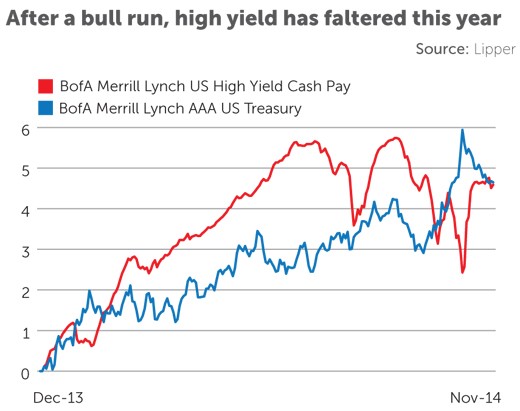Is This Bond for You Less Liquid Yields Great
Post on: 16 Апрель, 2015 No Comment

Bond investors have historically enhanced their returns by taking on more interest-rate or credit risk. Today, a third opportunity is emerging for investors: the liquidity premium.
As investors search for new ways to earn income in a low-interest-rate environment, illiquid investment opportunities are growing. These investments may not be as readily tradable as others in the fixed-income world, but they provide investors with a healthy yield premium in return for giving up the ability to quickly convert their assets to cash.
What are the catalysts creating these opportunities?
Credit disintermediation. Both midsized and large banks have faced more cost pressure or capital requirements, making it challenging for them to participate in some asset classes. As banks step back from certain lending activities, borrowers still need access to credit, opening the door to “private credit” opportunities for nonbank lenders. We’ve seen this trend accelerating for banks in the US and Europe in the past few years, in the aftermath of the financial crisis.
Here are two examples of areas created by credit disintermediation that we think offer substantial illiquidity premiums:
- Middle-market loans—or private direct loans—have been in the spotlight because of the good downside protection they offer, and because the loans are directly originated, which means lenders tend to have more control over the terms of the loan. This has resulted in the middle-market space experiencing lower losses compared to large-cap, liquid credit.
- Risk-sharing transactions are emerging as a viable alternative, especially as the US government redefines its role with government-sponsored enterprises in the mortgage investment market. Some of the tranches will be rated investment-grade, which will make funding capital efficient.
Declining secondary-market liquidity. Regulatory changes have affected banks and their fixed-income market-making abilities, reducing liquidity in secondary markets. Continued anxiety from the global financial crisis has also reduced liquidity for some fixed-income securities in secondary markets.
Here are a couple of examples where we think investors are being paid for declining secondary-market liquidity today:
- Closed-end funds have seen their discounts grow since the financial crisis. Today, they offer investors the opportunity to buy investment strategies at discounts as high as 10% to a fund’s underlying net asset value (NAV). Investors who traditionally invest in open-end mutual funds may consider closed-end funds that pursue similar investment strategies while offering a discount.
- Municipal bonds, which have faced their share of challenges in recent years, tend to be more illiquid because the secondary-trading market is dominated by individual investors. While credit spreads in taxable markets have declined from the worst of the financial crisis, in many cases their spreads are still higher than they were before the crisis.
Understanding the liquidity premium is a new dimension for fixed-income investors. In our view, taking the time to become more familiar with the factors driving these inefficiencies in private-credit and capital markets should convince many investors to turn illiquidity risk into opportunities.
The views expressed herein do not constitute research, investment advice or trade recommendations and do not necessarily represent the views of all AllianceBernstein portfolio-management teams.
Douglas J. Peebles is Chief Investment Officer and Head of Fixed Income at AllianceBernstein (NYSE:AB ) .
This article originally appeared on Institutional Investor .














